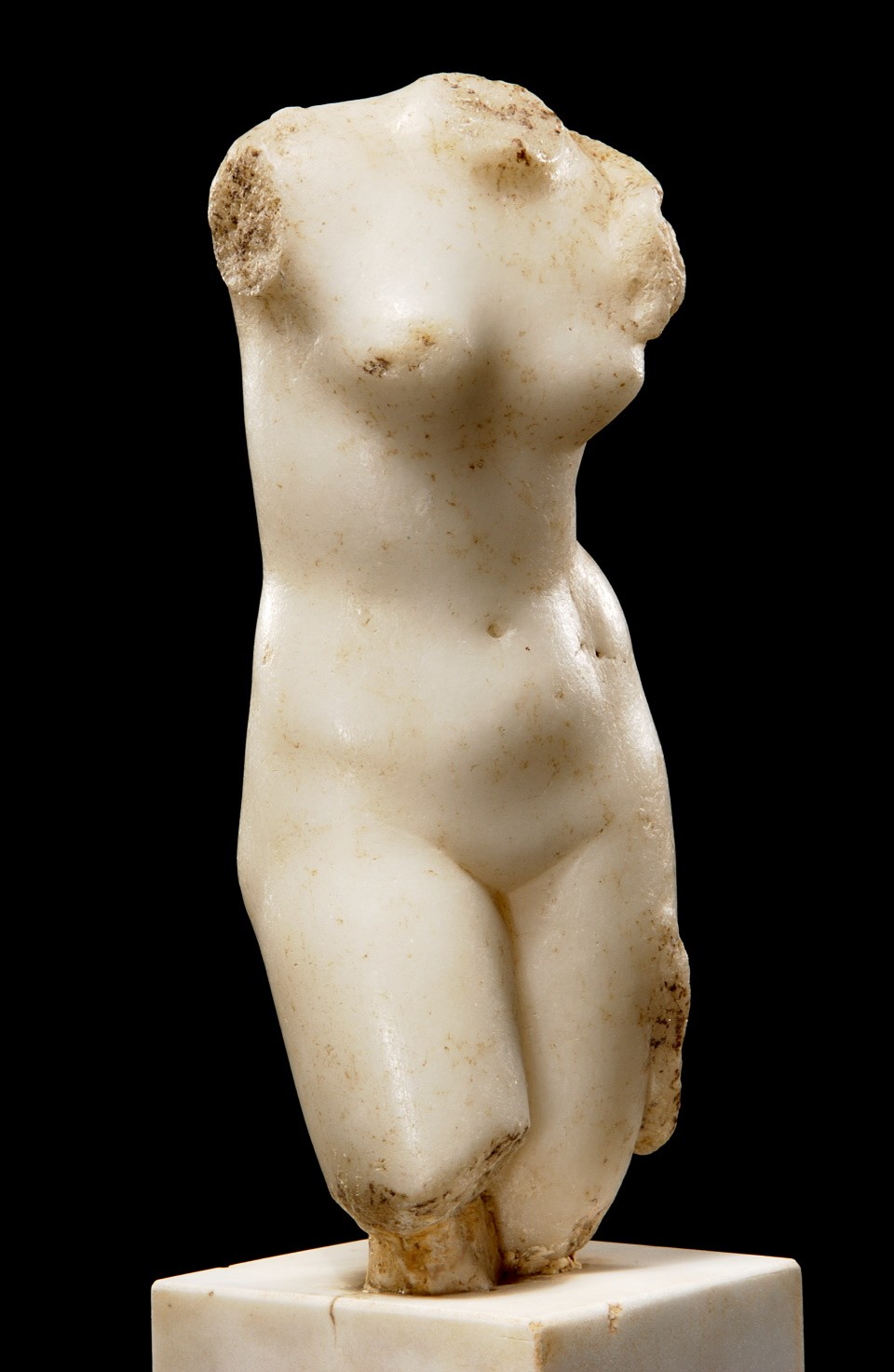Die Geburt der Göttin Aphrodite fand nach der mythologischen Überlieferung auf der Insel Zypern statt (Hesiod, Theogonie [2. Aphrodite-Hymnos]). Nachdem Kronos das Zeugungsglied seines Vaters Uranos vor der Insel Zypern ins Meer geworfen hatte und es heftig schäumte, entstieg hier die Göttin bei ihrer Geburt dem Meer.
Der Typus der "Aphrodite Anadyomene" nimmt direkt auf den Geburtsmythos bezug. Nackt entsteigt sie dem Wasser und erhebt ihre Arme zum Kopf, um sich die nassen Haare auszuwringen (anadýomai). Der Rest eines Delphinschwanzes seitlich am linken Bein weist zusätzlich auf die Meeresgeburt hin.
Dass die Aphrodite Anadyomene in hellenistischer und römischer Zeit sehr bekannt gewesen ist, belegen zahlreiche Wiederholungen und Varianten dieses Typus in allen erdenklichen Materialien. Allerdings ist trotz der großen Verbreitung im Kleinformat ein großplastisches Vorbild noch nicht erkannt worden. (AVS)
Ehem. Sammlung August Kestner, Rom
en









